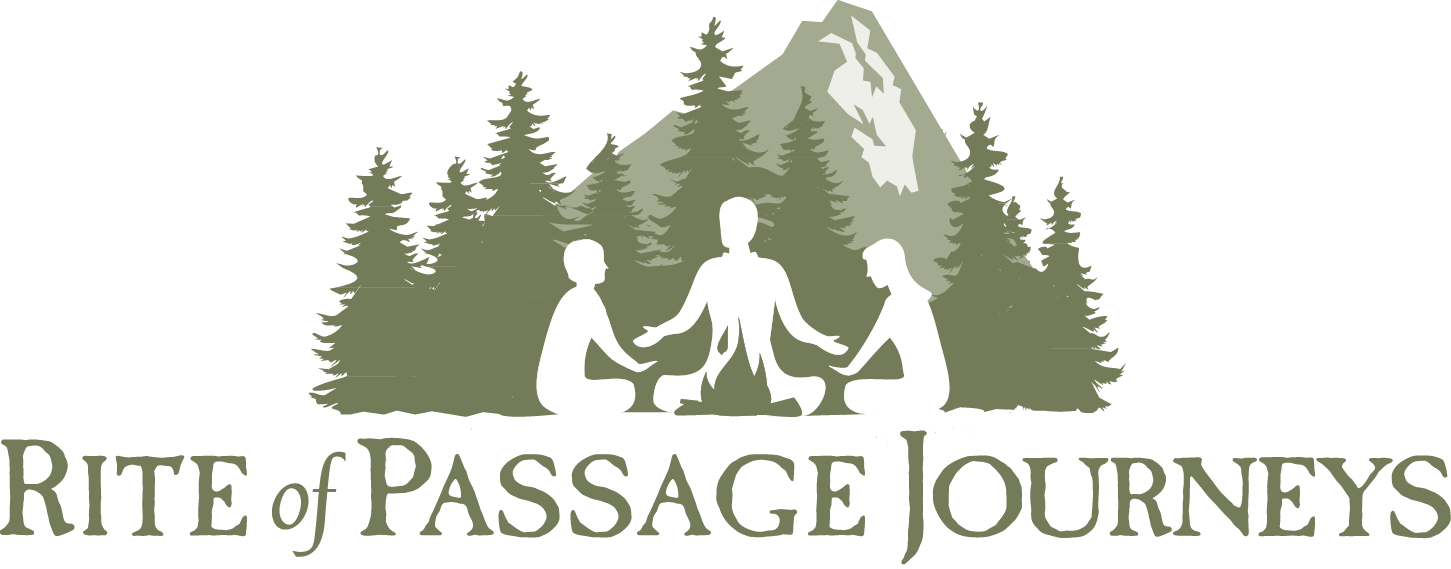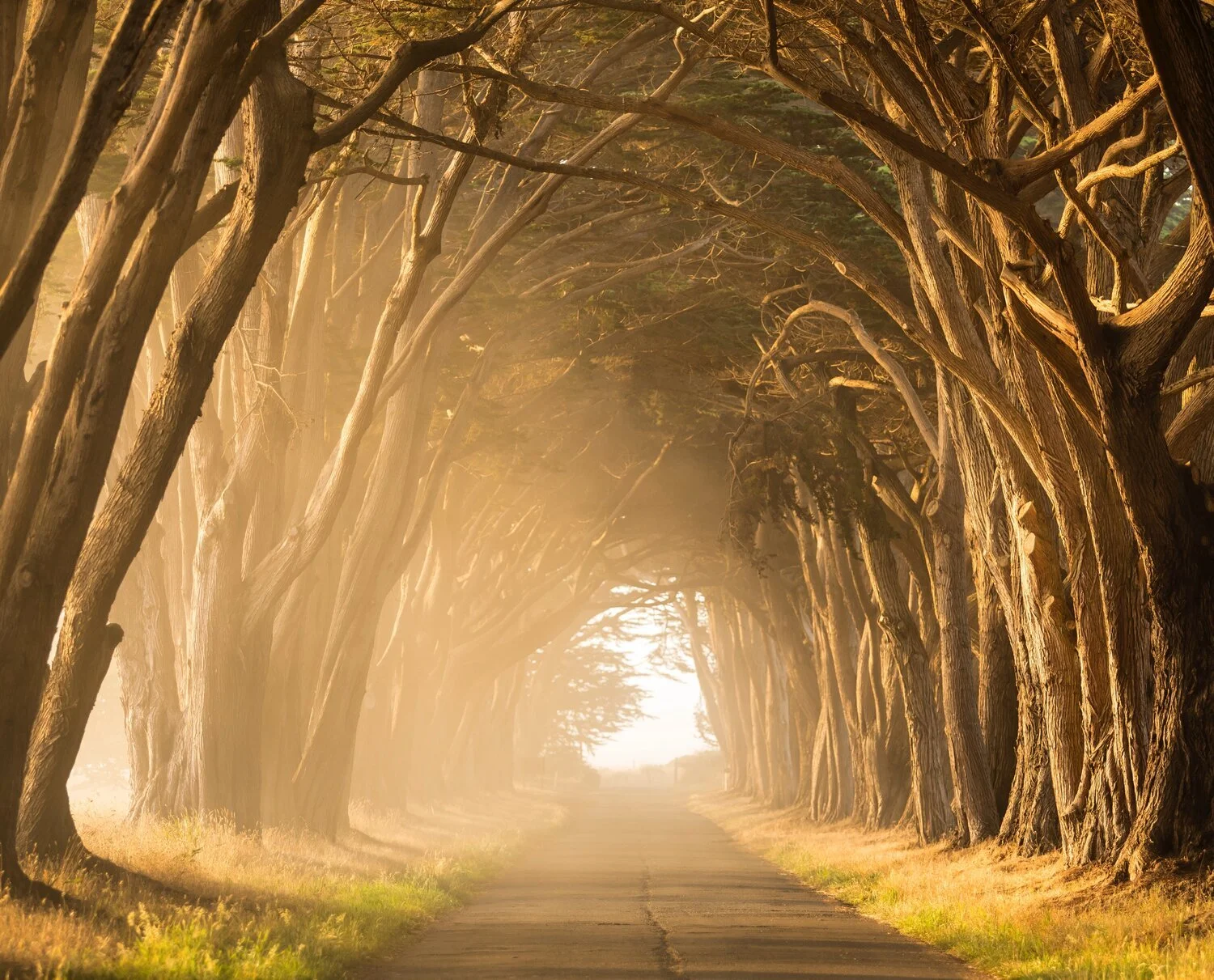The Reverend Jennifer DeBusk Alviar
I invite you into the mythic imagination of a landscape. Picture yourself paddling in a small, yellow kayak on a clear lake nestled in the woods. Towering evergreen trees outline the contours of a circular lake. It is early in the morning. The sun is just rising. The morning glow casts a bright light on one half of the lake, while the other half remains hidden in the shadows. What a bittersweet metaphor. This geographical landscape of the Pacific Northwest calls me toward deep soul work around my own interior landscape of hope, longing and heartache in relationship to my ancestors.
Growing up, I experienced much joy and pride in the stories that my mother would tell me of her pioneer great grandparents. In 1875, her great grandfather, Richard Carnine, served as captain of a train of 49 covered wagons navigating the rugged terrain from the Midwest to the Pacific Northwest. This included the traditional territory of the indigenous Osage people currently known as St. Louis, Missouri, to the traditional territory of the indigenous Cowlitz people currently known as Vancouver, Washington. After a long day of travel, these pioneering families would circle the wagons at night to gather everyone safely inside. I envisioned the image of a circle as a place of warmth, hearth and community-building. It inspired storytelling and songs shared around the campfire. When I faced challenges in life, my mother reminded me that I had pioneer blood in me. I was strong and courageous like my ancestors.
The shadow-side of a circle, however, is that it can serve to demarcate center from margin, insiders from outsiders. Consider the power of the mythic imagination to shape the narrative of the Great American West. Who gets to tell the story has everything to do with who wields the power. In the case of my ancestors, the overarching narrative passed down through history books and family lore is the heartbreaking story of colonization. It speaks to the painful narrative of broken promises of land treaties and the erasure of indigenous people’s proud culture and heritage.
This is why I intentionally use the words “traditional territory” to acknowledge the land on which I live, work and love. This land acknowledgment places me in a posture of humility. As a descendent of white settlers, it reminds me that I am a guest on indigenous people’s land. The least I can do is be a good steward of this land by honoring and respecting the people who have come before me.
I am that person paddling in the small, yellow kayak on a clear lake nestled in the woods. I feel myself rocked on the waves and generations between the past and present, between the human and more-than-human world. In 1938, my grandparents bought a rustic summer lake cabin and joined with other family cabins to fish, swim, hike and kayak. It is located on the traditional territory of the Cowlitz people along the Columbia River Gorge. For me, this place feels sacred. It holds a storehouse of memories marking my most significant rites of passage from childhood, adolescence, marriage and motherhood.
I scan the landscape to try to make sense of my place in the world. How do I help repair this broken circle of trust and move toward greater healing and wholeness in relationship to the indigenous people of this land? As I gaze up at the mountainous terrain before me, my eyes rest on a familiar land formation — the Sleeping Giant. The towering evergreen trees outline the shape of an eyebrow, nose, chin and sloping belly. I have viewed this landscape countless times. But this time, it stands out to me with new meaning. The Sleeping Giant’s form is hidden in the early morning shadows. In mythopoetic terms, the West symbolizes the Muse — an archetype of mystery, dreamwork and shadow work.
What an intriguing paradox. When it comes to matters of the heart, especially a broken heart, our well-honed defenses are too strong to penetrate through our conscious mind alone. This is where the power of dreams comes into play. The subconscious mind of dreams helps us bypass the rational mind to engage in more creative, holistic ways of accessing meaning. So the ultimate question becomes this: If our own challenging, historic reckoning with the American West is hidden and asleep in the shadows like the Giant, who or what will wake us up and move us toward social change?
This answer, I believe, lies within an even larger paradox. Some of the greatest spiritual leaders were sages disguised as fools. Tricksters and prophets from the world’s wisdom traditions used koans, parables and riddles to uproot the status quo. In their own inscrutable ways, they bypassed the rational mind into a more whimsical yet revolutionary way of enacting change. These mediators, if you will, entered through the back door, the hidden gate, the pathway to surprise in order to up-end business as usual. For example, consider the lyrics to this hymn by James K. Manley called Spirit:
You call from tomorrow,
you break ancient schemes.
From the bondage of sorrow
all the captives dream dreams;
our women see visions,
our men clear their eyes.
With bold new decisions
your people arise.
I sit quietly in my yellow kayak humming these lyrics while taking in the natural world around me. I experience a gentle movement of the waves beneath me. It feels soothing and consoling. Next, I am stirred by a slight breeze in the air. It heightens my senses and brings me to a more alert stance. This sensory meditation calls forth a few more stanzas from this same hymn.
Spirit, Spirit of gentleness,
blow through the wilderness calling and free,
Spirit, Spirit of restlessness,
stir me from placidness,
wind, wind on the sea.
Imagine holding in tandem the gentle and wild spaces of the natural world, alongside a restlessness that stirs our spirits toward enacting a more just world. A circle is a sacred center. When we feel held and witnessed in a communal circle of trust, we are able to honor the multitude of human emotions from grief and loss, to healing and wholeness. By embodying simple rituals of music, dance and prayers, we hold space for the possibility of grace.
This is the power of the mythic imagination. This is the role of tricksters, prophets and sages. By awakening our senses, they help connect our own personal stories of hope, longing and heartache within a larger collective narrative of liberation. My prayer is that together we may help to repair the broken circle of trust with indigenous people so that we may rebuild a sacred center. Within this sacred center, let us hold space for the possibility of grace. May it be so!
*****
Know the Land:
Native Land Digital: https://native-land.ca
Hymnal Credits:
Hymnary.org: https://hymnary.org/tune/spirit_manley
*Note: I have maintained the traditional wording of this hymn for legal purposes. In our Unitarian Universalist tradition, however, we have adopted the term “siblings in spirit” when referencing women and men to reflect more gender-inclusive language in support of the LGBTQIA+ community.
The Reverend Jennifer DeBusk Alviar is an interfaith minister ordained in the Unitarian Universalist tradition. She received her Master of Divinity degree at Starr King School for the Ministry in Berkeley, California. Her ministry encompasses public speaking, writing, theology, interfaith dialogue, retreat facilitation, social justice and youth leadership. She is a community bridge-builder in the broadest sense. The Rev. Alviar is currently engaged in multiple nonprofits focused on wilderness, ritual and eco-theology. These organizations include: Rite of Passage Journeys, Youth Passageways and Waymarkers. She is a member at East Shore Unitarian Church located on the traditional territory of the indigenous Duwamish and Coast Salish peoples currently known as Bellevue, Washington.












